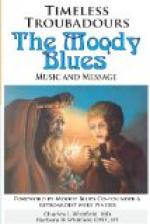CHAPTER III [22]
TECHNIQUE
Provencal literature contains examples of almost every poetical genre. Epic poetry is represented by Girart of Roussillon,[12] a story of long struggles between Charles Martel and one of his barons, by the Roman de Jaufre, the adventures of a knight of the Round Table, by Flamenca, a love story which provides an admirable picture of the manners and customs of the time, and by other fragments and novelas or shorter stories in the same style. Didactic poetry includes historical works such as the poem of the Albigeois crusade, ethical or moralising ensenhamens and religious poetry. But the dominating element in Provencal literature is lyrical, and during the short classical age of this literature lyric poetry was supreme. Nearly five hundred different troubadours are known to us at least by name and almost a thousand different stanza forms have been enumerated. While examples of the fine careless rapture of inspiration are by no means wanting, artificiality reigns supreme in the majority of cases. Questions of technique receive the most sedulous attention, and the principles of stanza construction, rime correspondence and rime distribution, as evolved by the [23] troubadours, exerted so wide an influence upon other European literature that they deserve a chapter to themselves.
There was no formal school for poetical training during the best period of Provencal lyric. When, for instance, Giraut de Bornelli is said to have gone to “school” during the winter seasons, nothing more is meant than the pursuit of the trivium and quadrivium, the seven arts, which formed the usual subjects of instruction. A troubadour learned the principles of his art from other poets who were well acquainted with the conventions that had been formulated in course of time, conventions which were collected and systematised in such treatises as the Leys d’Amors during the period of the decadence.
The love song or chanso was composed of five, six or seven stanzas (coblas) with, one or two tornadas or envois. The stanza varied in length from two to forty-two lines, though these limits are, of course, exceptional. An earlier form of the chanso was known as the vers; it seems to have been in closer relation to the popular poetry than the more artificial chanso, and to have had shorter stanzas and lines; but the distinction is not clear. As all poems were intended to be sung, the poet was also a composer; the biography of Jaufre Rudel, for instance, says that this troubadour “made many poems with good tunes but poor [24] words.” The tune known as son (diminutive sonnet) was as much the property of a troubadour as his poem, for it implied and would only suit a special form of stanza; hence if another poet




